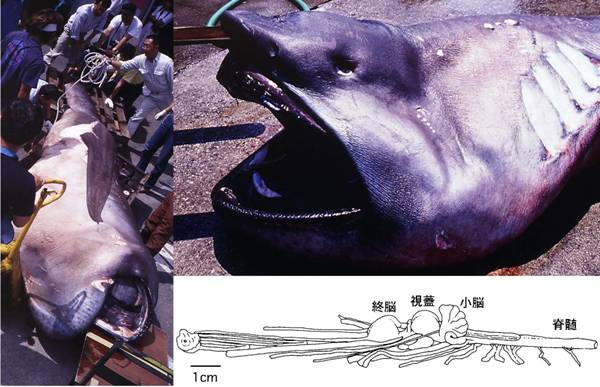In May 1997, I had a chance to take part in the dissection of a defrosted megamouth shark (courtesy of Toba Aquarium and Late Dr. Suzuki Kiyoshi ). I was astonished to see a tiny 20g brain that was dissected out of the gigantic body of the shark weighing 1 ton (more accurately: 1040 kg). “What a balance!”- I said to myself - “I weigh 65kg with an approximately 1.4kg brain, while just a 20g brain in 1000kg body in this fish!!!”
The megamouth brain reminded me of the epigram by Lewis Thomas (The Fragile Species, 1992) “We humans may be the cleverest of all animals, as we tell ourselves, but we haven’t really run away with the game, not yet anyway.” A “gigantic natural experiment” spending as long as some 400 million years taught me that the 20 g brain is enough to manage the huge body in a certain life style in a certain environment.
Previously, the slogan “the bigger the better” was very popular in Japanese society and now “the slow is beautiful” is becoming popular. In societies trying to conserve “diversity”, it is important to respect to the “ground” rather than a simple slogan. In this particular case, we might say “the small is beautiful under certain circumstances”. At one night, I met Ms. Megamouth in a dream (our megamouth was a female) and I asked her “What is your philosophy for your life?” She kindly replied with a smile, “the small is reasonable, however, the game is not over yet.” Almost immediately, I woke up and imagined that 100 million years later, an energy-saving type animal such as megamouth with a small brain may be thriving, irrespective of whether human beings survive or not. Anyway it is a dreamful work to study fish brain. For the details of the megamouth brain, see our paper: Ito, Yoshimoto & Somiya (1999), Copeia (1): 210 - 213.
